‘At school I was a bit of a rebel. I liked doing things in my own way. In math, I’d try to solve problems without formulas, using a more mechanical approach instead. I think that illustrates my way of working. In Mongolia, there is always a lack of materials, so we use street knowledge to figure things out. We call it the ‘Mongolian way,’ which is basically making things work without the adequate tools. Quick fixes and decision making are important in my art. The process doesn’t have to be perfect. In fact, it can even worsen the status of an object or idea, but I still see it as a form of progress.
‘Both of my parents [Erdenebayar Monkhor and Munkhtsetseg Jalkhaajav] are artists. They were art school sweethearts. Their lives and careers are very inspiring. I didn’t recognize it at first, but it affected me unconsciously. In the 1990s, after the democratic revolution, Mongolian artists had to find their own identity; before that, they were influenced by Soviet agendas. There is almost a gap in our collective memory as Mongolian traditions were forbidden in Soviet times. My parents’ artwork looks back at their heritage. Through art, Mongolian identity is getting back on its feet.
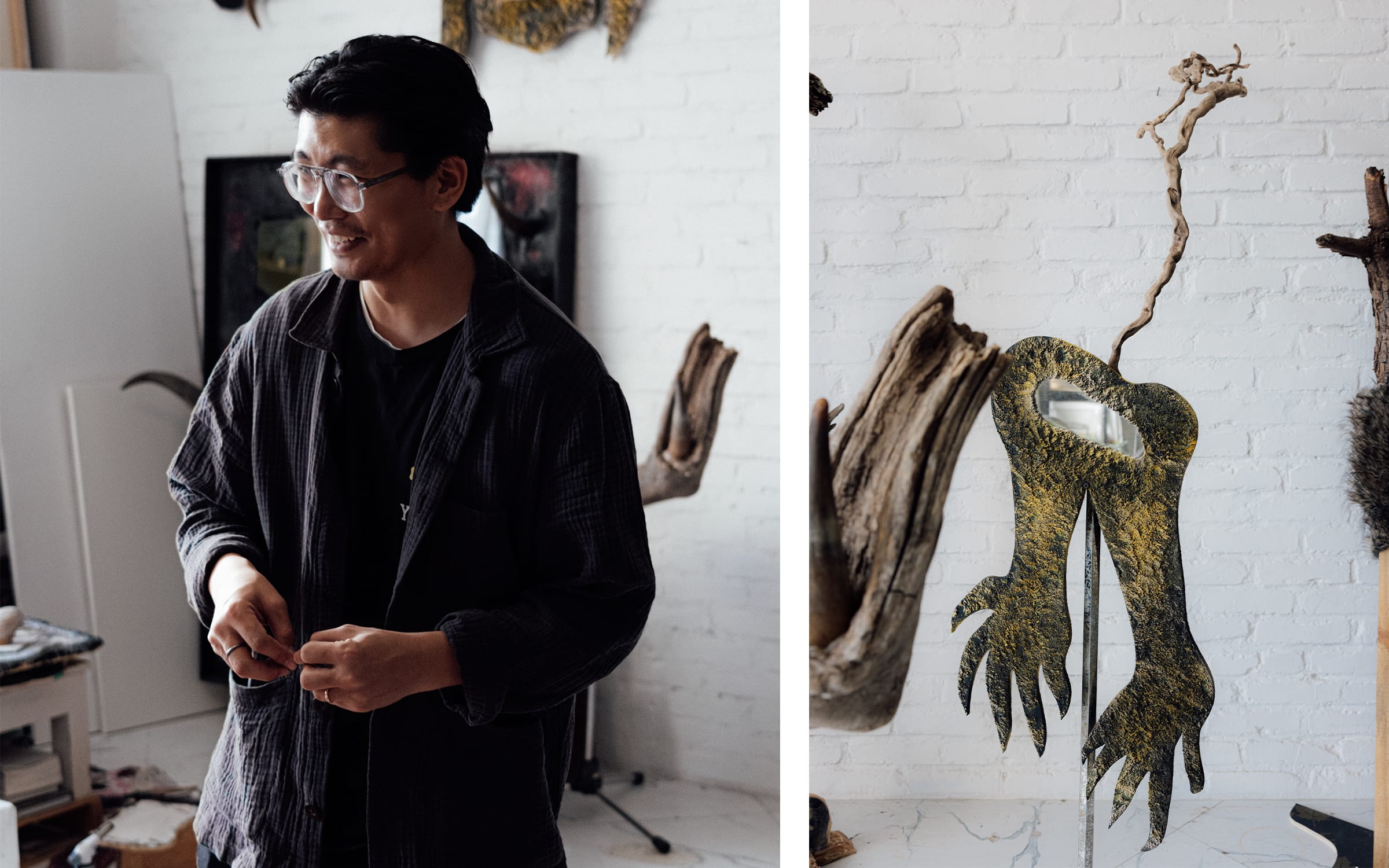
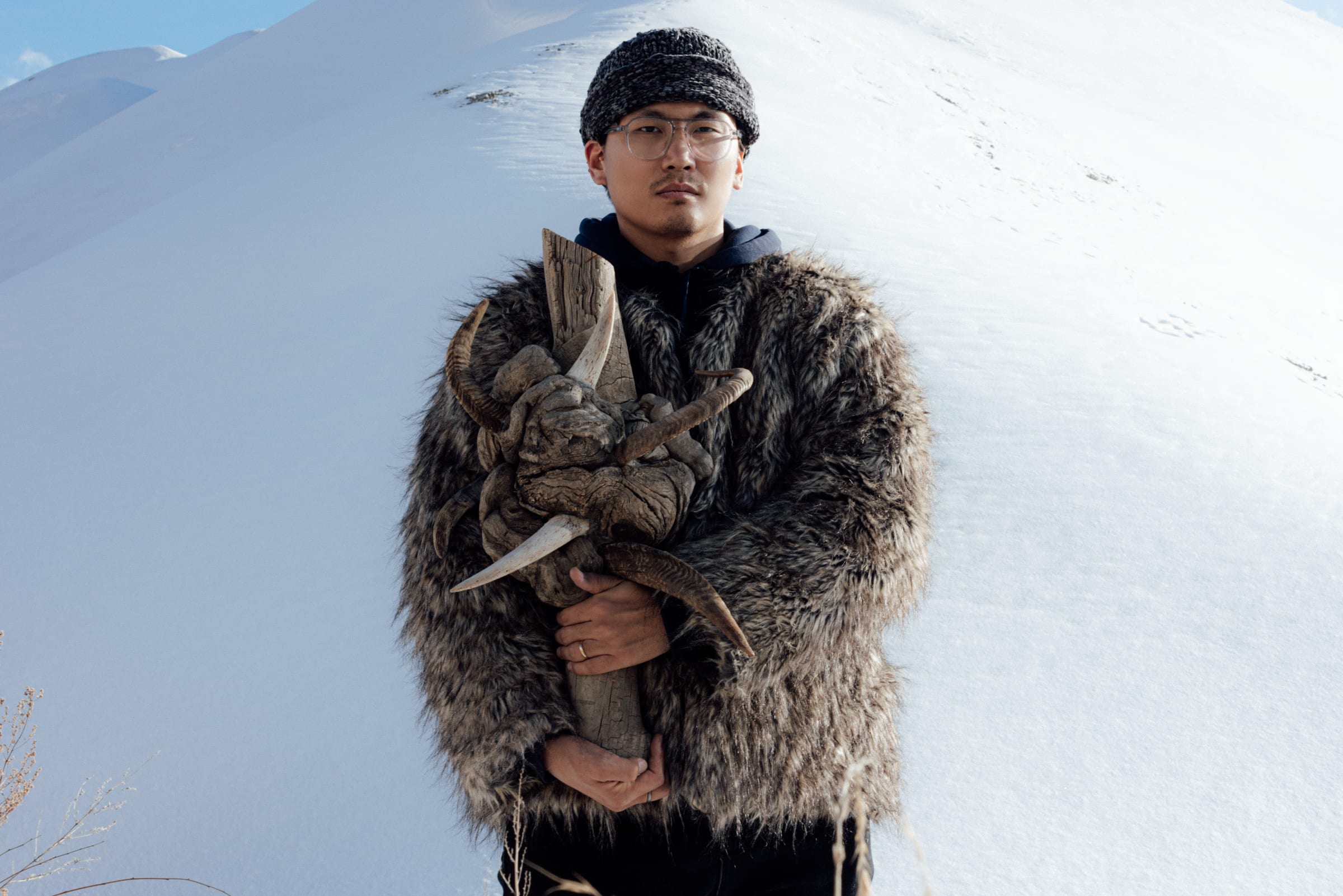
‘My grandmother lived in Sükhbaatar, in the eastern part of Mongolia, where the fastest horses in the country can be found. Every summer, I would go on horseback and help shepherd the livestock. I worked with what we call the “five star animals”: sheep, goats, horses, cows, and camels. I learned the animals’ characteristics; how nature tends to act; and how things decay, which later influenced my practice. At first, I began exploring Mongolian riddles and oral traditions in my work. I was most interested in riddles about body parts. They often use vivid animal metaphors. I was fascinated by how people connected such different ideas in such an imaginative and visual way.
‘I knew I wanted to become an artist no matter what and be in New York. I went to Hunter College. Since the 60s, the school has had many great artists as part of their faculty. I took a sculpture course and realized it gave me much more freedom than painting because you could experiment with an array of mediums. Nari Ward and Constance DeJong were professors who inspired me. I also took several literature courses, which allowed me to see a bigger picture of how different creatives research and plan ahead in their work. And religion classes gave me a chance to learn about other structures of belief.
‘After graduation, I had an urge to make a lot of work but New York wasn’t the right place logistically, so I flew home. For my first exhibition, I was mainly using the construction materials that were accessible to me, like polyurethane foam. I liked how it appeared to be an organic, rocky surface but actually it’s totally the opposite. It’s soft, not durable, and very temporary. It becomes brittle in the wind and sun. The word “foam” made me think of the Buddhist writings about foam bubbles on the surface of rivers, which describe the bubbles as pure and perfect. They reflect the light and shapes around them but then they can just pop, which signifies impermanence.
‘I am interested in how stories survive through generations and how beliefs or riddles are passed on. One of my sculptures, Distance of Deepness (2015) is based on the myth of the giant Mongolian death worm, which travels under the sand dunes. People believe it exists in the Gobi Desert. Even in the Western world, it appears in many comic books. I made a hybrid creature out of layers of cardboard covered in sawdust and added ox horns. I didn’t want to make it literal. I wanted to explore this unimaginable idea that we inherited from the previous generations which we hold on to. I was interested in how we become a vessel for stories and how we prolong their life by sharing them. As long as stories exists, they resist being forgotten.
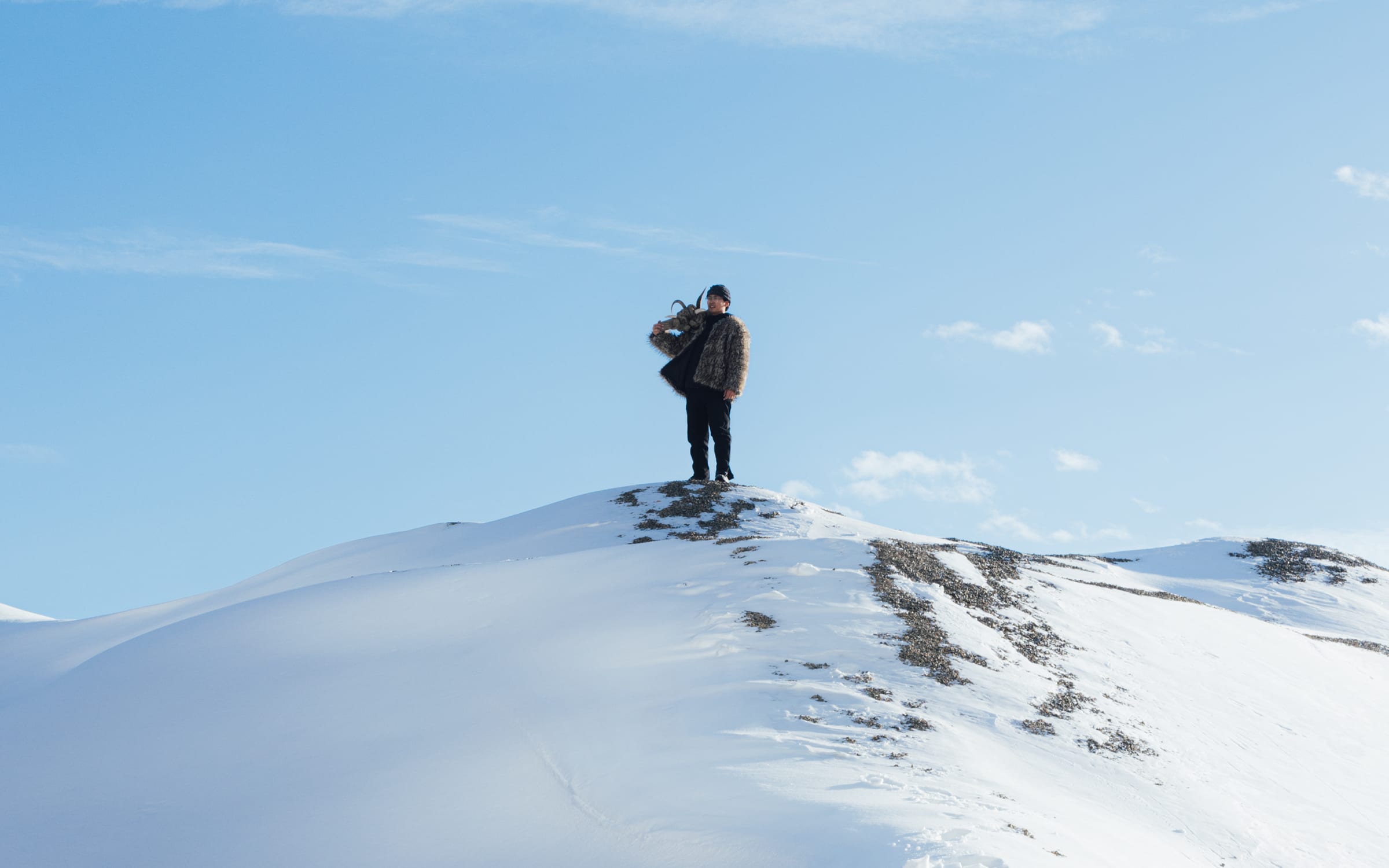
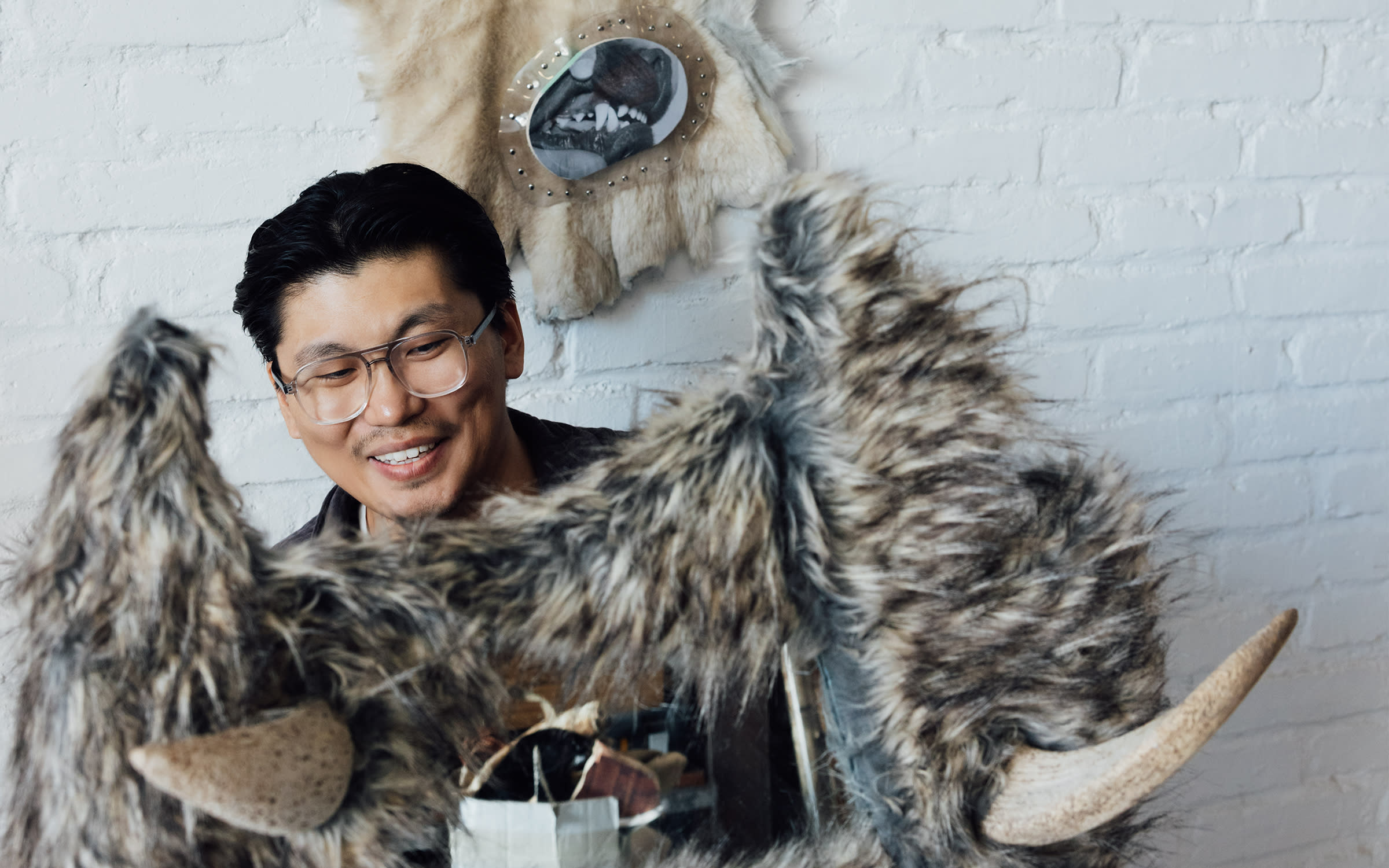
‘I got a scholarship to attend graduate school at UCLA. My thesis work was based on the Mongolian lunar calendar. Each day it indicates the location of our spirit in our body. It could be in the chest or liver. People may look at it if they are going into a surgery when there’s a chance your spirit may leave your body. The calendar exists for people to maintain their wellbeing. My graduation exhibition, “Where is the Spirit Today?”, was based on these ideas. I used fire on plywood. Through the smoke and marks the fire left, I aimed to convey this idea of a spirit which is moving continuously from one part to another. It’s part of my ongoing interest in taking care of yourself both physically and spiritually. I was also exploring ideas of maintenance, growth, and resistance.
‘The Venice Biennale pavilion in 2019 was a continuation of my previous work. I wanted to create a journey of sorts. One room had dim red lighting and recordings of Mongolian throat singers playing in the background. The ceiling was filled with long hanging foam tubes which were like an upside-down field of tall grass. I wanted to give the audience a rough time while walking through that small space, then allow them to feel relieved upon leaving that environment. I think either in making art or experiencing art, there is always some sort of struggle.
‘I spent about 2 months in Venice to create the installation, which gave me a new perspective. The process of art making helps you with other problems in life. Even if it’s a small sketch or large work, there’s always a moment where you think “this might not be a good idea,” but if you can get past that, it always gets better. In my work I often think about how things evolve or transform and improve. Even if it gets worse, you still grow.’
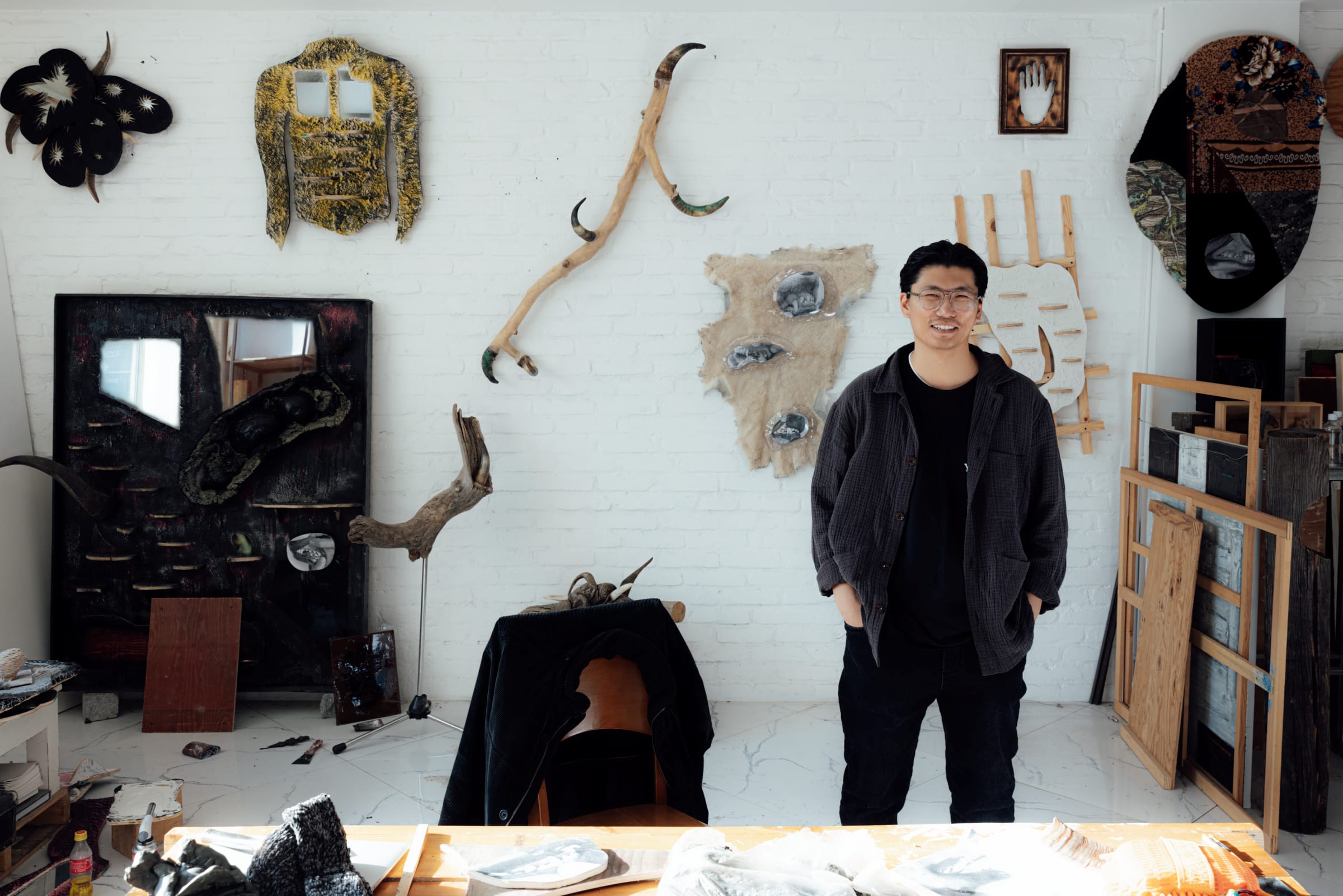
Jantsankhorol Erdenebayar is represented by Flowers Gallery (London). The gallery will present a solo booth by the artist at Art Basel Hong Kong's upcoming edition, in the Insights sector.
Payal Uttam is an independent writer and editor who divides her time between Hong Kong and Singapore. She contributes to a range of publications including Artsy, The Art Newspaper, South China Morning Post, and The Wall Street Journal.
All photos and videos taken in Ulaanbaatar by Tumurbaatar Otgontsetseg for Art Basel.